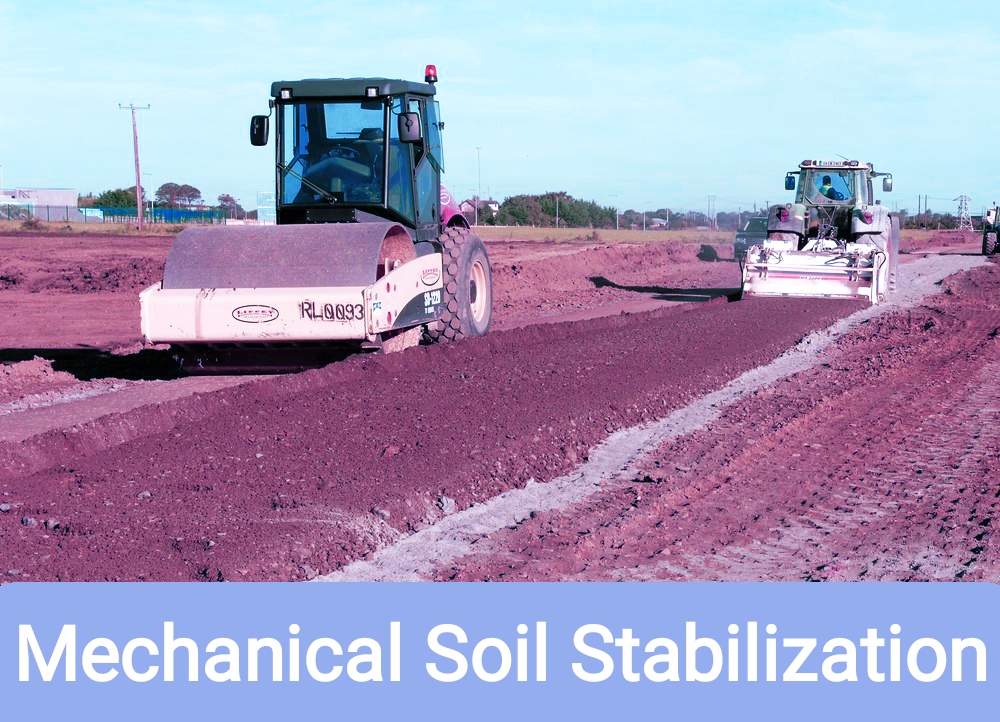Table of Contents
Mechanical Soil Stabilization
Mechanical soil stabilization is the soil stabilization technique with the help of mechanical equipments. This process alter the physical behavior of the soil.

Mechanical soil stabilization method uses compaction to consolidate soil aggregate particles. The grain size distribution of the soil should be such that it forms a dense mass when compacted.
A stable soil can be obtained by compaction after homogeneous mixing. Additional fine particles or aggregates can be added to form a solid and well graded soil-aggregate mixture. In some cases, geotextiles can be used to improve the technical properties of the soil.
Mechanical stabilization is a process of improvement
soil properties with varying gradations. This process
including soil compaction by the application of various types of rollers, rammers, vibration techniques and sometimes heavy circular beams. The stability of the soil for this method is based on the inherent properties of the soil.
Methods of Mechanical Soil Stabilization
There are several methods used to achieve mechanical stabilization.
1. Compaction
Compaction usually uses heavy weights to apply pressure from above to densify the soil. Machines such as large soil compactors with vibrating steel drums are often used for this purpose. Over compaction of the soil should be avoided and special consideration should be given as over compaction will shatter the aggregates and cause the soil to lose its structural properties.
2. Soil Reinforcement
Soil problems may be solved by technical or non-technical mechanical solutions. Geotextiles and engineering plastic meshes are designed to trap soil and help control erosion, moisture conditions, and soil permeability. Larger aggregates such as gravel, stone, and rubble are often used where added mass and stiffness can prevent soil movement and improve load-bearing capacity.
3. Addition of Graded Aggregate Materials
A common way to improve the technical properties of soil is to add specific aggregates that give the soil desirable properties. Increased strength or decreased plasticity. This process saves material, improves the support capabilities of the undercarriage, and provides a working platform for the rest of the structure.
4. Mechanical Treatment
Traditionally, this has been the accepted practice for dealing with soil contamination. This is a technique that physically removes contaminated soil and transfers it to designated hazardous waste facilities far from population centers. More recently, however, chemical and biological remediation has proven to be a superior solution, both economically and environmentally.
